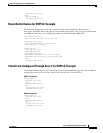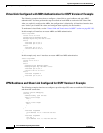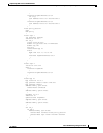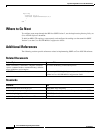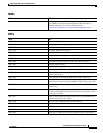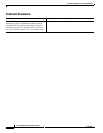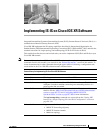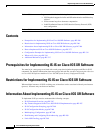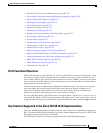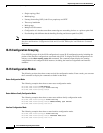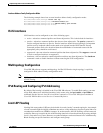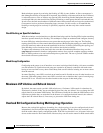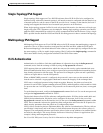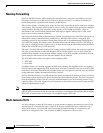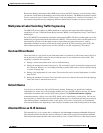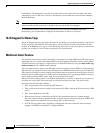
Implementing IS-IS on Cisco IOS XR Software
Information About Implementing IS-IS on Cisco IOS XR Software
RC-267
Cisco IOS XR Routing Configuration Guide
OL-14356-01
• Maximum LSP Lifetime and Refresh Interval, page RC-270
• Overload Bit Configuration During Multitopology Operation, page RC-270
• Single-Topology IPv6 Support, page RC-271
• Multitopology IPv6 Support, page RC-271
• IS-IS Authentication, page RC-271
• Nonstop Forwarding, page RC-272
• Multi-Instance IS-IS, page RC-272
• Multiprotocol Label Switching Traffic Engineering, page RC-273
• Overload Bit on Router, page RC-273
• Default Routes, page RC-273
• Attached Bit on an IS-IS Instance, page RC-273
• IS-IS Support for Route Tags, page RC-274
• Multicast-Intact Feature, page RC-274
• Multicast Topology Support Using IS-IS, page RC-275
• MPLS Label Distribution Protocol IGP Synchronization, page RC-275
• Label Distribution Protocol IGP Auto-configuration, page RC-276
• MPLS TE Forwarding Adjacency, page RC-276
• MPLS TE Interarea Tunnels, page RC-276
• IP Fast Reroute, page RC-276
IS-IS Functional Overview
Small IS-IS networks are typically built as a single area that includes all routers in the network. As the
network grows larger, it may be reorganized into a backbone area made up of the connected set of all
Level 2 routers from all areas, which is in turn connected to local areas. Within a local area, routers know
how to reach all system IDs. Between areas, routers know how to reach the backbone, and the backbone
routers know how to reach other areas.
The IS-IS routing protocol supports the configuration of backbone Level 2 and Level 1 areas and the
necessary support for moving routing information between the areas. Routers establish Level 1
adjacencies to perform routing within a local area (intra-area routing). Routers establish Level 2
adjacencies to perform routing between Level 1 areas (interarea routing).
For Cisco IOS XR software, each IS-IS instance can support either a single Level 1 or Level 2 area, or
one of each. By default, all IS-IS instances automatically support Level 1 and Level 2 routing. You can
change the level of routing to be performed by a particular routing instance using the is-type command.
Key Features Supported in the Cisco IOS XR IS-IS Implementation
The Cisco IOS XR implementation of IS-IS conforms to the IS-IS Version 2 specifications detailed in
RFC 1195 and the IPv6 IS-IS functionality based on the Internet Engineering Task Force (IETF) IS-IS
Working Group draft-ietf-isis-ipv6.txt document.
The following list outlines key features supported in the Cisco IOS XR implementation:



